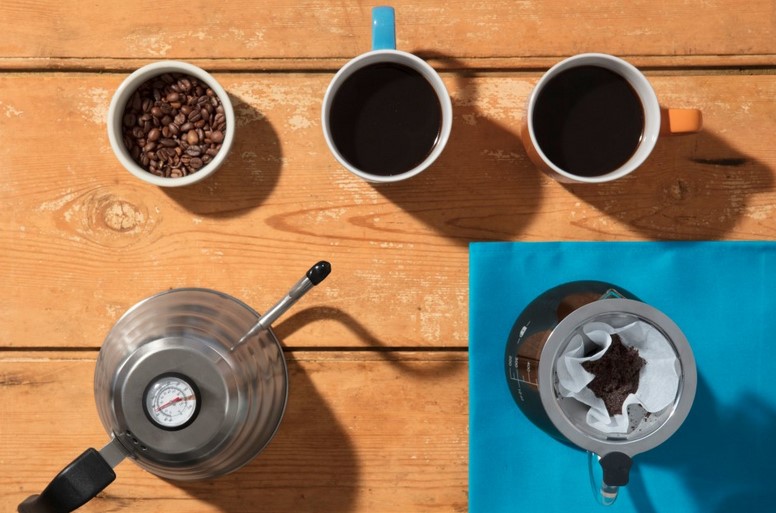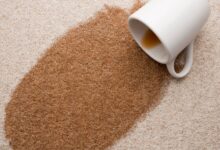In this article we’ll talk about how to remove coffee stains and how not to use bleach, enzymatic cleaners, baking soda, or isopropyl alcohol. These methods can leave your stained clothes or carpet looking dirty again quickly. But they can also cause more serious problems. Listed below are some other methods you can use to remove coffee stains. They may not be as effective as bleach, but they do work.
Coffee stains are the bane of all coffee connoisseurs’ existence, and they won’t just magically disappear despite how hard you scrub. We don’t have to tell you this because you already know it’s a fact of life. Well, the good news is that we have a guide that will help remove coffee stains from furniture and clothing, which you can use for stain removal in your home or laundry room.

Avoid using bleach to remove coffee stains
While there are several different solutions to coffee stains, there are two main things you should avoid. The first method requires soaking the fabric to remove the stain, while the second method is not as effective and can leave a white spot behind. Lemon juice, for instance, contains sugar and can make a stain worse, so it is best to avoid this method. If you really cannot live without your coffee fix, you can use white vinegar. Mix one third cup of white vinegar with two-thirds cup of water. Use this solution to neutralize the stain and remove the smell.
While the first method will work for most coffee stains, you can also use a home-made stain remover. A simple mixture of two cups of warm water, a few drops of dish soap, and one tablespoon of white vinegar should do the trick. You can follow this method whenever you spill coffee on your clothing or other items. Once you’ve made the mix, try rubbing it in the stain with a soft towel.
Avoid using enzymatic cleaner
To get rid of a stubborn coffee stain, try one of these tips: Blot it with a white cloth or paper towel. Always replace the cloth if it becomes dirty. Blotting the stain can remove the extra ingredients from the fabric. If you can’t remove the stain using blotting, try another method involving a wet cloth or sponge. Enzymatic cleaners work by breaking up biological substances, such as coffee and chocolate. Follow the manufacturer’s instructions and test the cleaning solution on a discreet area.
Enzymatic cleaners are popular for removing stains made of organic materials. They use enzymes to break down staining molecules, such as fatty acids and proteins. These cleaners are environmentally friendly compared to other types of commercial cleaners. But their concentrations and types of enzymes vary, and some manufacturers don’t disclose the types of enzymes they use. They may also be harder to find, especially when traveling.
Avoid using baking soda
Whether you have a stain on your carpet, dentures, or furniture, you can use baking soda to remove it. The best way to remove coffee stains is to sprinkle it on the stain, allow it to sit for at least 15 minutes, and then vacuum it up. The powder will also neutralize any odors that might be present. The following tips are a safer alternative to baking soda.
– Unlike vinegar, baking soda is very effective at removing tannins. This makes it a popular option when tackling a stain. However, if you want to make sure that you get rid of the stains, you should use a different method. You can also use a solution of vinegar and salt. This solution works great to remove coffee stains and will prevent them from setting.

Avoid using isopropyl alcohol
The alcohol in denatured and isopropyl alcohol can be used to remove stains on many types of fabrics. It can be used to remove stains that cannot be removed with soap and detergent, and it can remove a variety of surface soils as well. However, it should not be used on certain types of fabric, including acetate, rayon, wool, or leather.
First, make sure you are not working on a stain that is particularly stubborn or a stain that is a difficult one to remove. Pretreating a stain involves applying a liquid cleaner such as rubbing alcohol to the affected area. The solution can be applied to the stain using a cloth. After pretreatment, you should dab the area with the cleaner or rub it into the stained area. If the stain is not completely removed, repeat the process.
More than anything, one of the best things you can do to help in limiting the potential damage is to make sure that your table doesn’t have a lip or edge on it. This way, once that cup of joe has tipped over, the coffee is less likely to continue to roll over the edge of the surface and hurt itself on anything in the immediate area.

